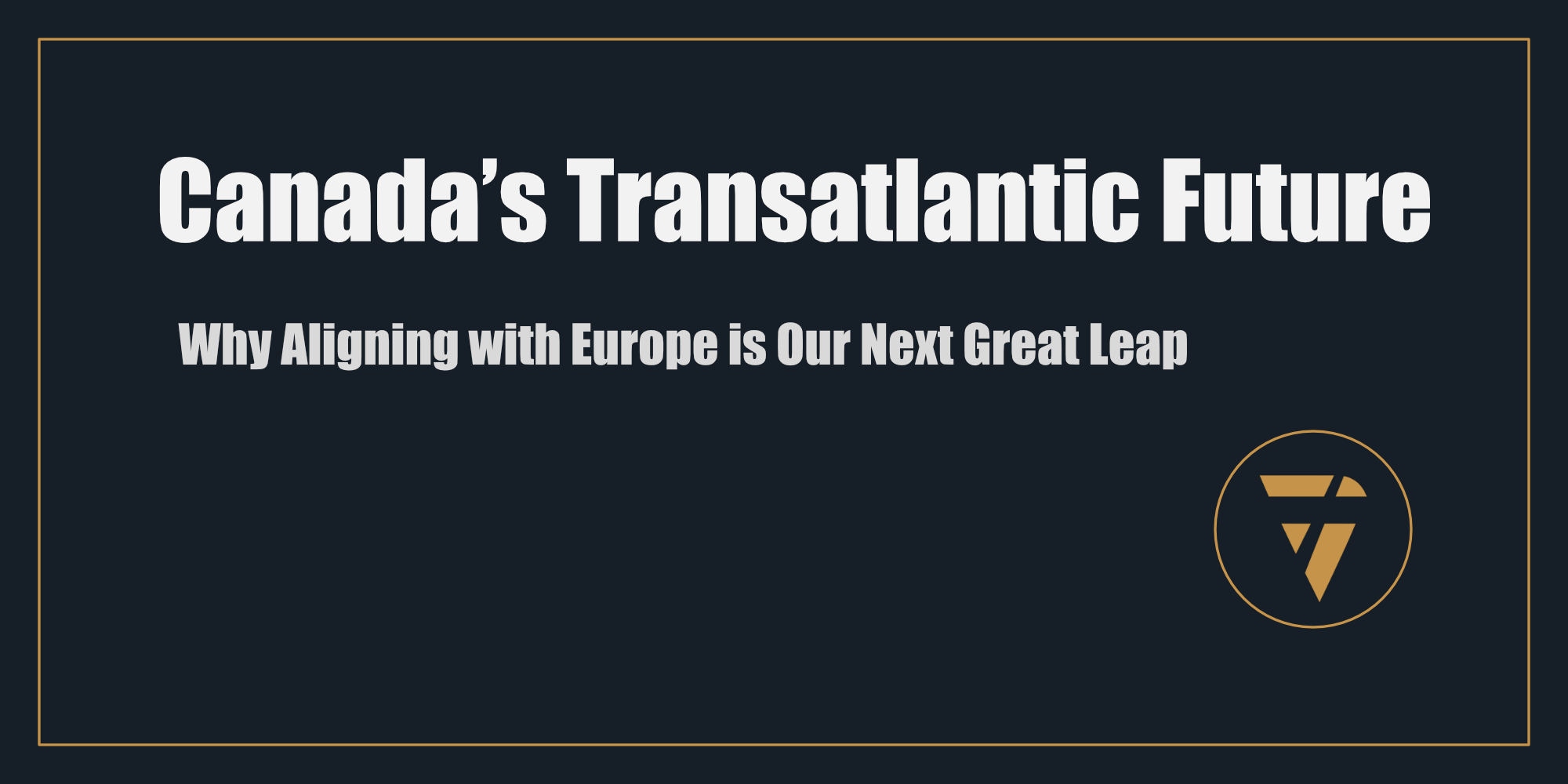Canada’s Transatlantic Future
Why Aligning with Europe is Our Next Great Leap

What if the relationships that shaped Canada’s past, are no longer enough to secure its future?
For over a century, Canada’s prosperity has been deeply tied to its southern neighbour. The U.S. has been our largest trading partner, closest ally, and cultural cousin. This bond, forged by geography and shared history, has weathered wars, economic upheavals, and political shifts. But today, the cracks are showing.
Political polarization and economic protectionism in the U.S. pose growing challenges. Social instability and environmental backpedaling raise questions about America’s ability to lead in a world demanding collective action on climate, technology, and security. As Canada looks southward, it’s increasingly clear: we need a Plan B.
That plan is Europe.
Why Europe?
Europe offers Canada more than just a market of 500 million consumers. It provides stability, innovation, and shared values. The European Union (EU) has long been a champion of multilateralism, sustainability, and human rights—principles that align seamlessly with Canada’s identity and aspirations.
- Economic Opportunity: With the Comprehensive Economic and Trade Agreement (CETA), Canada already has a strong trade framework with Europe. Expanding this relationship can unlock access to cutting-edge industries like green technology, AI, and advanced manufacturing.
- Democratic Stability: The EU remains a global leader in upholding democratic norms and resisting authoritarianism. In an era of rising geopolitical uncertainty, aligning with Europe strengthens Canada’s commitment to these ideals.
- Climate Leadership: While the U.S. wavers on climate policy, the EU leads with initiatives like the European Green Deal. Canada’s natural resources and innovation potential make it a perfect partner in the transition to a sustainable future.
The Path Forward: A Blueprint for Alignment
Strengthening ties with Europe doesn’t mean turning our back on the U.S. It means diversifying our partnerships to ensure resilience in an uncertain world. Here’s how we can make it happen:
1. Arctic Connectivity: A Strategic Bridge
Canada’s Arctic territories are more than a frontier; they’re a gateway. By investing in Arctic infrastructure—ports, research stations, and trade routes—we can position ourselves as Europe’s northern partner. This also solidifies our claim to this geopolitically critical region.
2. Deepening Economic Integration
While CETA has been a good start, it’s time to go further. Expanding regulatory alignment in industries like renewable energy, technology, and pharmaceuticals can streamline trade and boost competitiveness. A joint green innovation fund with Europe could also accelerate the shift to a low-carbon economy.
3. Cultural and Academic Exchange
Shared values grow stronger when people connect. Scaling up student exchanges, research collaborations, and cultural partnerships will weave Canada and Europe closer together. Programs like Horizon Europe offer a model for co-investment in innovation.
4. Defence and Security Collaboration
The Arctic is becoming a geopolitical hotspot, and Canada can’t rely solely on NATO or the U.S. to protect it. Partnering with Europe on Arctic security and defence technologies ensures sovereignty while building trust.
5. A New Transatlantic Framework
Canada should lead the creation of a "North Atlantic Union"—a partnership that integrates the economic benefits of trade with co-decision rights on shared challenges like climate change, security, and technological governance.
What’s Holding Us Back?
Change is never easy, and this vision comes with challenges.
- Public Perception: Many Canadians see the U.S. as our default partner. Persuading citizens to embrace Europe as a parallel ally will require storytelling, transparency, and proof of benefits.
- Regulatory Complexity: Harmonizing with EU standards while maintaining our commitments under USMCA will demand careful negotiation.
- Cost: Expanding Arctic infrastructure, integrating markets, and fostering exchange programs will require upfront investment. But the long-term returns—economic resilience, global influence, and environmental sustainability—make it worth the effort.
The Opportunity of a Lifetime
Canada is at a pivotal moment in its history. The choices we make now will define our place in the world for decades to come. Aligning with Europe isn’t just a contingency plan; it’s a bold step toward a future where Canada is a leader in global stability, innovation, and sustainability.
This isn’t just about trade deals or diplomatic niceties. It’s about reshaping our identity for the 21st century—an identity that reflects our values, leverages our resources, and ensures our prosperity in a changing world.
Are we ready for the next step?
What does Canada gain by staying anchored to the past, and what could we achieve by reaching across the Atlantic? Share your thoughts.
If this vision resonates, subscribe for more insights on how Canada can lead in a changing world. Let’s shape the future, together.
This Substack is reader-supported. To receive new posts and support my work, consider becoming a free or paid subscriber.
This is what I’m working on. Tell me what you think, I enjoy the conversation! Subscribe and follow the work in real time.
Thanks!
B
PS -





